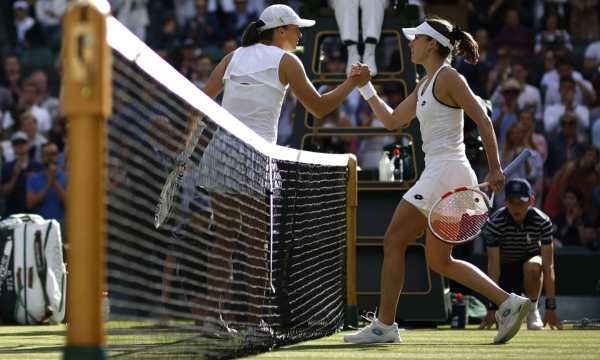Tennis: Everything About the Most Charming Sport on Court
Tennis fascinates millions of people around the world with its unique blend of elegance and strategy.
Anúncios
This racket sport, which evolved from the palm games of French royalty, has won hearts on every continent.
Whether you are a curious beginner or a long-time enthusiast, tennis offers a sporting journey filled with challenges and rewards.
In the following sections, we will explore everything from the basic rules to the most memorable matches that have defined this noble and passionate sport.
How Tennis Conquered the Five Continents
Modern tennis was born in Victorian England, but its roots date back to the French racket games of the 12th century.
The evolution of this sport has accompanied important social changes over the centuries. From an exclusive sport of the aristocracy, it has become a global passion accessible to different social classes.
Wimbledon, established in 1877, was the first major tournament and remains the most traditional on the circuit.
The four Grand Slams of tennis represent different cultures and playing surfaces. The Australian Open (hard court), Roland Garros (clay), Wimbledon (grass), and the US Open (hard court) are the pillars of the global tennis calendar.
The globalization of the sport accelerated in the 20th century with icons such as Suzanne Lenglen and Bill Tilden.
Today, the sport is played in over 200 countries, with professional tournaments on every continent.
Grassroots programs have emerged to discover talent in regions traditionally without a tennis tradition.
Game Rules for Beginners
Tennis is contested on a rectangular playing field split by a central net, featuring specific measurements for singles (individual competitors on either side) and doubles (pairs of players per team).
The primary goal is to strike the ball across to the opposition’s territory in a manner that prevents them from making a valid return.
Competitors utilize rackets to propel the ball, with service alternating every game. Tennis employs a distinctive scoring progression: 15, 30, 40, and game, with particular protocols for deadlock scenarios.
A player claims a set by securing six games with at least a two-game advantage. Contests may be determined by best of three or five sets, contingent upon the division and championship.
Some essential guidelines of the game include:
- The service must be delivered diagonally into the adversary’s service box.
- Players must strike the ball before it bounces twice on the court surface.
- Stepping on the baseline during the serve results in a fault.
- Touching the net or invading the opponent’s side during the point is considered an infraction.
Knowing the basic rules allows you to better appreciate the strategy and nuances of this fascinating sport.

Tennis-match-(Source-Google)
Technique Tips to Improve Your Game
Excelling in tennis demands regular training and focus on the technical elements that establish the foundation for quality play.
Properly holding the racket is fundamental for delivering various shots with efficiency and force.
Test different holding styles including continental, eastern, and western to determine your optimal technique.
Your stance should be steady, featuring slightly flexed knees and properly distributed body weight.
Maintain visual contact with the ball constantly and establish a consistent service preparation routine to enhance reliability.
Nimble movement separates novice players from more advanced participants in this sophisticated and challenging activity. Key shots to develop include:
- Forehand: stroke performed with the palm facing forward.
- Backhand: can be executed with one or two hands.
- Serve: combines power, precision, and spin.
- Volley: stroke without the ball bouncing, usually near the net.
- Slice: stroke with a cut effect that keeps the ball low.
Consistency surpasses power in the initial phases of development in tennis. Focus on keeping the ball in play before attempting spectacular winning shots.
Curious Traditions That Vary from Country to Country
Tennis is full of peculiar traditions that reflect distinct cultural values around the world.
At Wimbledon, immaculate white is mandatory for all players, a rule dating back to the early days of the sport. This tradition represents the elegance and decorum so valued by the British in this sport.
In France, the Roland Garros audience is known for its passionate display of emotions during matches. The red-orange clay of the French tournament represents a connection with the European tradition of clay courts.
Players often slide and execute distinct movements specially adapted for this surface. The US Open celebrates American culture with its festive atmosphere and technological innovations.
It was the first Grand Slam to implement the tiebreak and the hawk-eye, reflecting American values of efficiency and modernity.
The tournament is known for vibrant night sessions that turn tennis matches into true spectacles.
In Asian countries like Japan, respect for opponents and etiquette is highly valued. Players are often evaluated not only for their technical skills but also for their behavior on the court.

Wimbledon-dress-code-(Source-Google)
Courts in Extraordinary Places Around the World
Tennis transcends conventional locations, being played in settings that challenge the imagination and enhance the versatility of this sport.
The floating court in Dubai, built over the ocean with a view of the Burj Al Arab, redefines the luxury of this global sport.
Players like Roger Federer and Andre Agassi have already played exhibitions in this impressive setting.
On the alpine glaciers of Switzerland, temporary courts are set up at over 3,000 meters of altitude. The thin air completely alters the dynamics of the ball, creating a unique challenge for players.
Amid the Mayan ruins in Mexico, exhibition tournaments connect modern sport with ancient civilizations.
Africa also hosts surprising locations, such as courts built in savannas with views of wild animals.
These extraordinary environments demonstrate how tennis adapts to different cultures and landscapes while maintaining its essence and embracing global diversity.
Epic Matches That Made History
The history of tennis is marked by legendary clashes that transcended the sport and captured the imagination of the global audience.
The 2008 Wimbledon final between Federer and Nadal is often considered the greatest match ever played.
Extending for nearly five hours and interrupted by rain, it culminated with Nadal’s victory in the fifth set as natural light faded.
The endurance duel between Isner and Mahut at Wimbledon 2010 redefined the limits of physical endurance.
The final score of 70-68 in the fifth set, after three days of play and over 11 hours on the court, set multiple records that will probably never be surpassed.
The generational match in the 2017 Australian Open final between Federer and Nadal marked a special chapter in contemporary sport.
Both players were returning from injuries, providing an unexpected resurgence that thrilled sports fans worldwide.
Other memorable clashes include the 2019 US Open final between Nadal and Medvedev and the historic 1980 Wimbledon final between Borg and McEnroe.
These matches transcended competitive tennis to enter the collective imagination as examples of athletic excellence and sports drama.
Players with the Most Titles in Tennis
Modern tennis has witnessed the rise of true titans who have redefined the limits of what is possible in this sport.
Novak Djokovic leads the men’s ranking with 24 Grand Slam titles, surpassing the historic mark set by his rivals. His flexibility and exceptional return of serve have revolutionized the sport today.
Rafael Nadal, with 22 Grand Slam titles and 14 at Roland Garros, embodies professional intensity and resilience. His forehand with extreme top spin has become a legendary stroke recognized throughout the circuit.
In the women’s circuit, Margaret Court holds the historic record with 24 major titles. Serena Williams, with 23 titles, has redefined women’s tennis with her unmatched power and athleticism.
Steffi Graf completed the only “Golden Slam” in history, winning all four Grand Slams and the Olympic gold in a single year.
The impact of these champions transcends statistics, as each has contributed to expanding the global popularity of tennis while inspiring new generations of players.
Conclusion
Tennis continues to evolve as a sport and cultural phenomenon, maintaining its unique ability to inspire players and spectators around the world.
From improvised courts in humble neighborhoods to the majestic arenas of the Grand Slams, this sport connects people through values such as excellence, respect, and overcoming challenges.
Whether you are a casual player, an ambitious competitor, or simply a sport enthusiast, tennis offers endless possibilities for growth and enjoyment.
As you continue your journey in this fascinating sport, remember that each stroke represents a learning opportunity and each match a chance to surpass your own limits.
FAQ
What is the difference between court surfaces for the game?
What are the most important tournaments besides the Grand Slams?
How do the junior categories in tennis work?
Why is tennis considered one of the most mental sports?
How do professional tennis players prepare physically?
 WTA Tennis: A Complete Guide to the Current Women’s Circuit
WTA Tennis: A Complete Guide to the Current Women’s Circuit
WTA: the circuit that revolutionized women’s tennis worldwide! Anúncios This professional circuit has transformed athletes into global icons and redefined standards in women’s sports. Each season, […]
Keep reading Learn All About the ATP: The Elite of Men’s Tennis in 2025
Learn All About the ATP: The Elite of Men’s Tennis in 2025
Discover how the ATP has transformed men’s tennis into a professional and highly competitive global circuit. Anúncios Today, the Association of Tennis Professionals represents the pinnacle […]
Keep reading Serena Williams: The Journey and Records of the Tennis Legend
Serena Williams: The Journey and Records of the Tennis Legend
Serena Williams transformed women’s tennis with a powerful playing style that we had never witnessed on professional courts. Anúncios More than an extraordinary athlete, she became […]
Keep reading